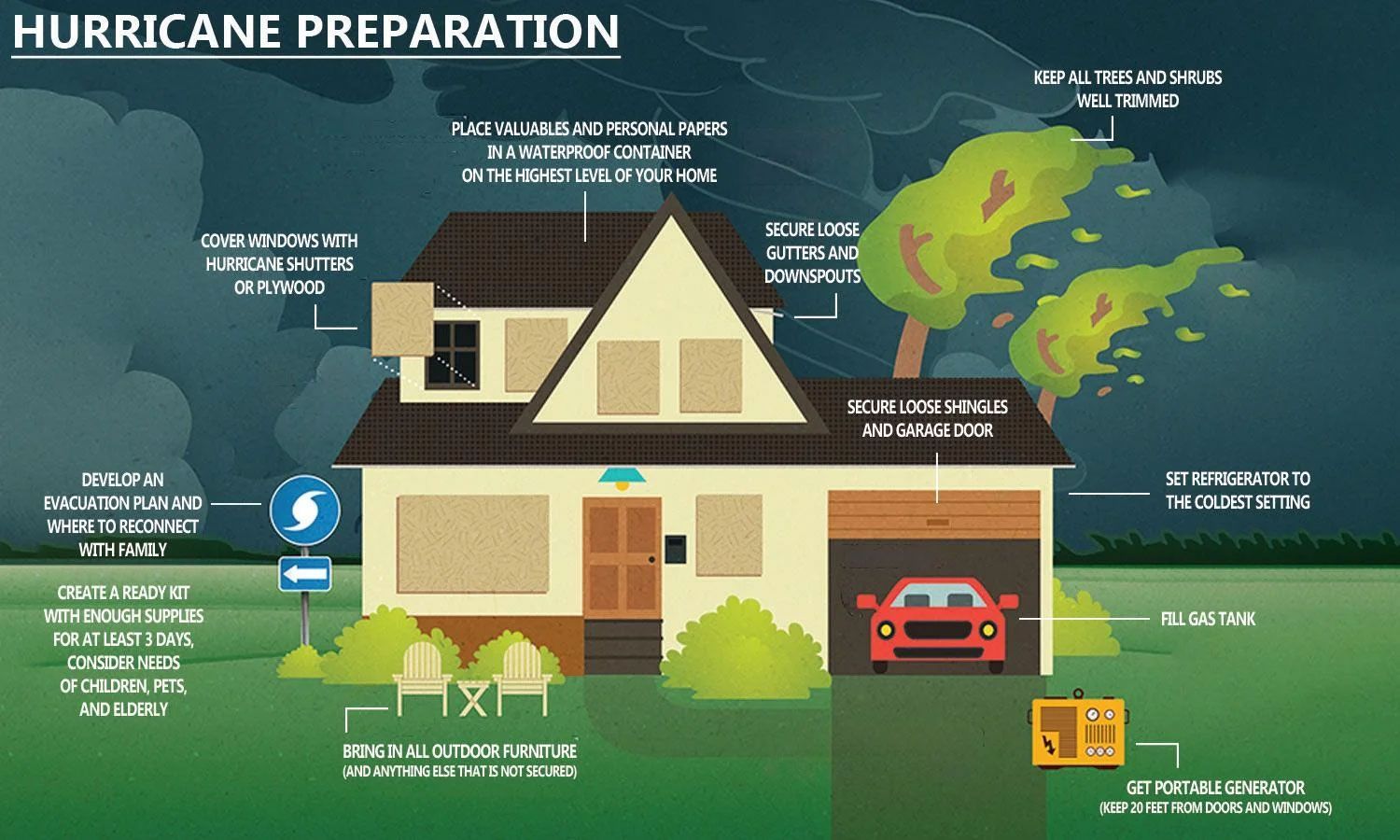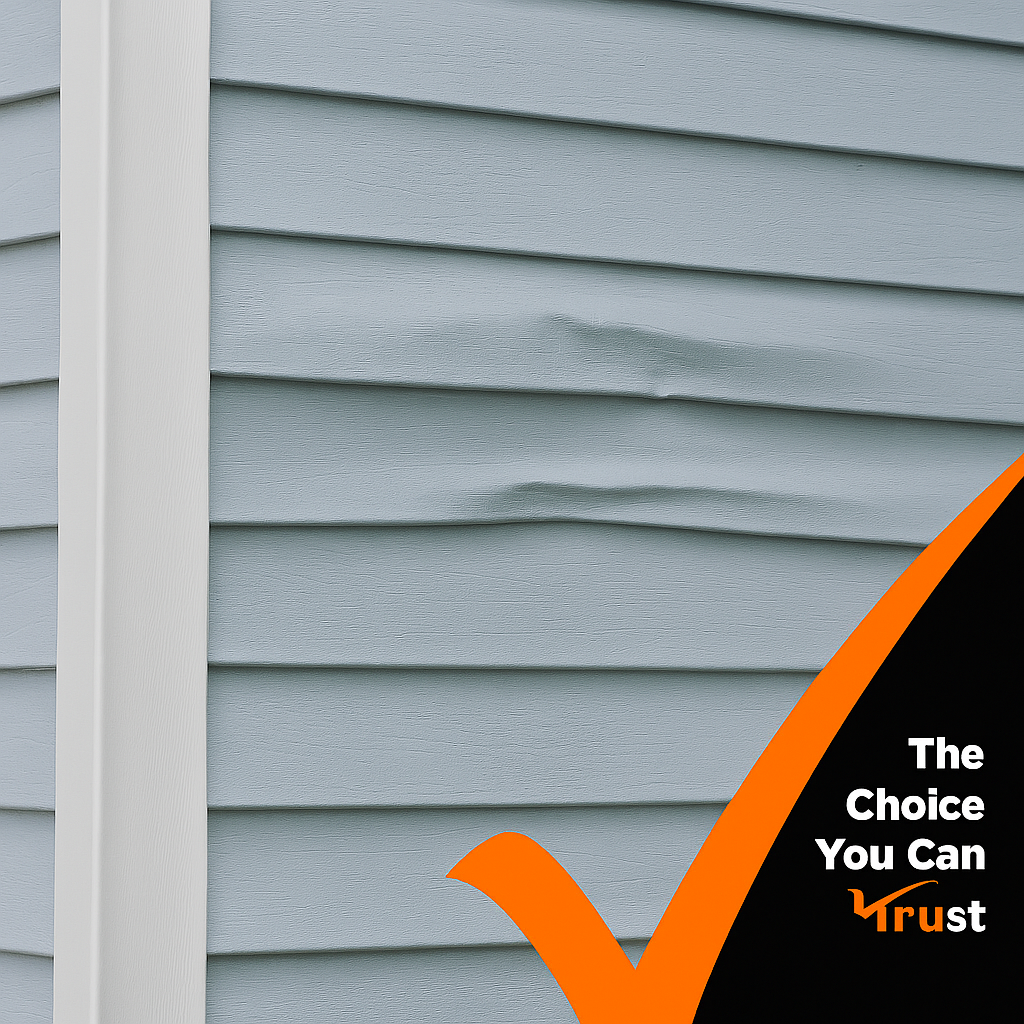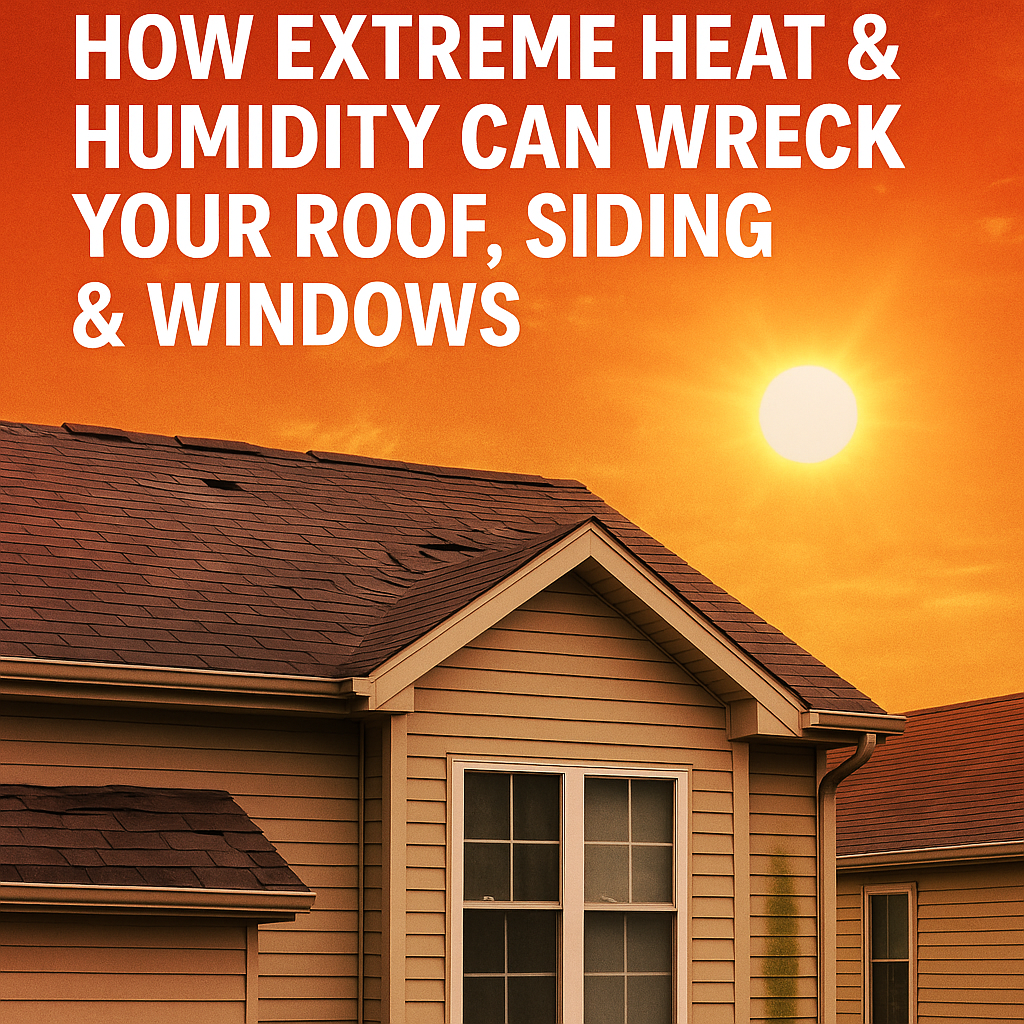Why You Should Document Your Home Before a Storm or Hurricane: A Guide for Homeowners
When a hurricane is forecasted to make landfall, your first priority is the safety of your family. However, it's equally important to protect your home and ensure you're prepared for any potential insurance claims. One of the best ways to do this is by documenting your home, especially your roof, siding, windows, and any other key structures, before the storm hits. Proper documentation can make a huge difference in the insurance claims process if your property sustains damage. Here's why and how you should document your home before a storm or hurricane strikes.
Why Documenting Your Home Is Crucial Before A Storm
- Insurance Claims Simplification After a hurricane, insurance companies often need proof of the condition of your home before the storm to process your claim efficiently. Detailed records of your roof, siding, windows, and other areas can provide this crucial evidence. This minimizes disputes over the extent of damage, leading to a smoother claims process.
- Proving Pre-Storm Condition Insurance adjusters will inspect your property after the storm. Photos and videos taken before the storm can serve as proof that any new damage was caused by the hurricane and not pre-existing conditions. Having a record of the pre-hurricane state can prevent insurers from denying your claim.
- Accurate Damage Assessment A comprehensive set of documentation allows you to assess the full extent of the damage. This ensures you get the proper coverage for repairs or replacements, helping you avoid unnecessary out-of-pocket expenses.
What To Document On Your Home Before A Storm
Here’s a checklist to guide you through the documentation process:
- Roof: Start by taking photos or videos of your roof from multiple angles. Pay close attention to areas that are prone to damage, like shingles, gutters, and any flashing around chimneys or skylights. If you have a drone, use it to capture aerial views of your roof for more detailed documentation.
- Siding: Walk around your home and photograph each side of the exterior. Look for any pre-existing cracks, wear, or discoloration, so you can clearly show what was there before the storm.
- Windows and Doors: Take close-up shots of windows, doors, and frames. Check for any existing damage or worn-out seals. Make sure you photograph the condition of screens, storm shutters, or any window coverings you may have installed as well.
- Gutters and Downspouts: Ensure to include gutters and downspouts in your documentation. Clear images will help you verify whether they were clogged, damaged, or in good condition before the storm.
- Fencing and Landscaping: While these may not be covered by insurance in every case, it's a good idea to document fences, trees, and major landscaping features. This can help if your policy covers damage to such features.
- Interior: Don't forget to document the inside of your home, particularly rooms that might be at risk if there are roof or window leaks. Take photos of ceilings, walls, and any pre-existing water damage if applicable.

How To Properly Document Your Home To Protect Your Investment
- Date-Stamped Photos: Use a camera or smartphone that allows you to store metadata, including the date the photos were taken. Date-stamped photos are essential when filing an insurance claim, as they clearly show when the documentation occurred.
- Video Walkthrough: Record a video walkthrough of your home, both inside and outside. Speak into the video to explain any notable features or potential vulnerabilities, like loose shingles or aging windows. Videos can capture more context than photos alone.
- Store Documents Safely: Upload your photos and videos to a cloud storage service so they’re safe and accessible after the storm, even if your devices are damaged or lost. You can also email them to yourself or a trusted contact.
- Keep a Home Inventory: Along with photos and videos, keep a written inventory of major assets and their value, such as appliances, furniture, electronics, and important home fixtures. This helps ensure you’re reimbursed for any interior damage or loss.

When to Document
It’s ideal to document your home at the start of hurricane season or whenever a storm is approaching. Don’t wait until the last minute—take your photos and videos when you're calm and have the time to be thorough. Make it a habit to update your documentation annually or whenever you make significant improvements to your home.
Stay Prepared and Protected
While we can’t prevent hurricanes, we can be prepared for the aftermath. By taking the time to document your roof, siding, windows, and the rest of your property, you’ll be equipped with the proof you need for a successful insurance claim. TruChoice Roofing is here to help you protect your home, both before and after the storm. Contact us for a free professional inspection and repair consultation anytime. Stay safe, stay prepared, and let us help you weather any storm.






